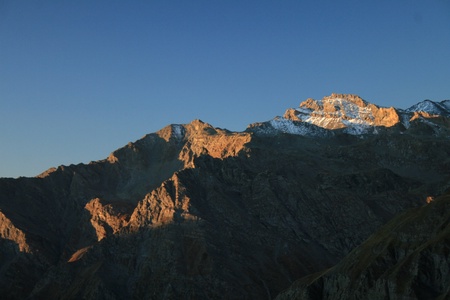Matteo Spagnolo and Brice Rea were awarded a Royal Society International Exchange grant to fund collaborative research with colleagues from the University of Padova and the CNR in Italy on palaeo glaciology and climatology in the European Alps.
The prediction of future climate changes and how these will affect the melting of ice and sea level rise, locally and globally, is one of the biggest challenges of our times. Luckily, the history of our planet indicates that these changes have happened before. Should we not learn from the past to improve our understanding of the present and future? This proposal therefore aims to reconstruct the climate conditions of some 20,000 years ago to provide ideal calibration data to those climatic models that are currently used to understand past, and predict future, scenarios. The focus is on the Last Glacial Maximum, a time when a considerable part of Europe was covered by large ice masses. During this time there were also many smaller glaciers at the periphery. Our study will explore the landscapes of the Alps to find landforms left behind by those smaller, peripheral glaciers. The landforms will be used to reconstruct the extent of the glaciers by means of bespoke computer tools. The rocks that those glaciers deposited will be sampled in the field and dated in the laboratory, as their geochemistry is like a chronometer that records the time passed since their deposition. Glacier size and elevation are mainly controlled by summer temperature and winter precipitation. Our reconstruction of Last Glacial Maximum glaciers will allow us to extract those climatic conditions for the past. These will then be used to reconstruct past atmospheric circulation, which is essential to improve models of future climate changes.


